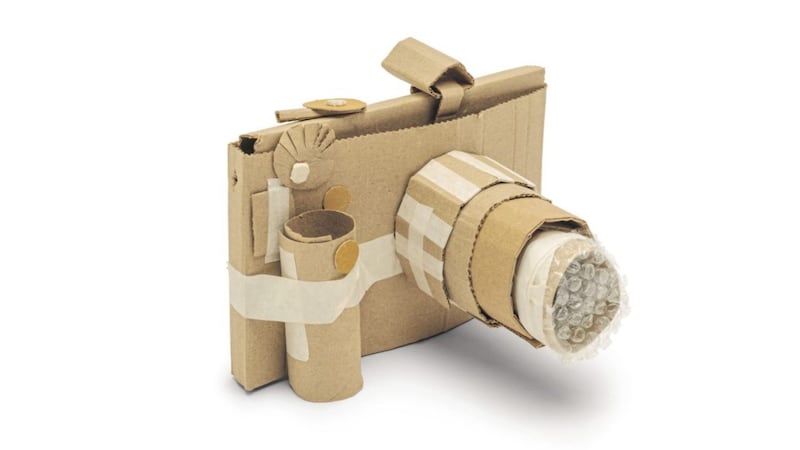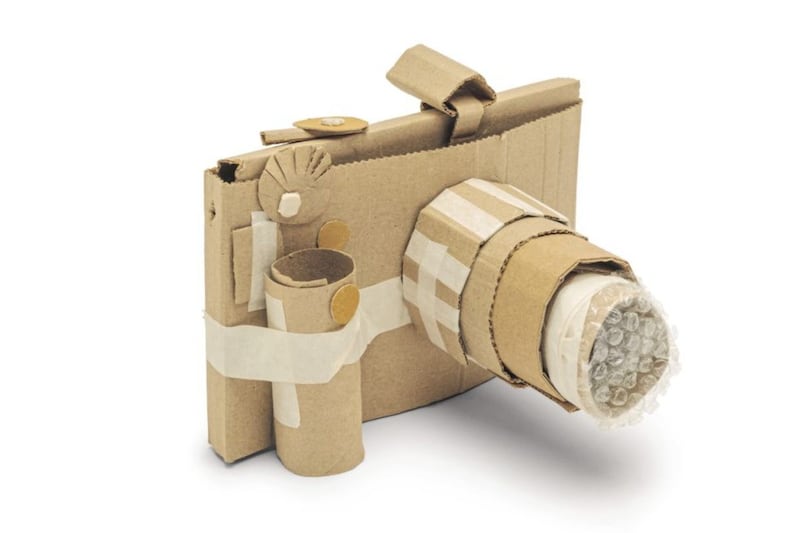THE pressure on parents to spend and spend on things can be pretty overwhelming. From new baby lists, to seasonal gift guides, to the latest toy that 'so and so' from school has, it can often feel like there is so much that our kids need.
With our sensible hats on, we know that kids don't really need that much at all in the way of toys, games and entertainment, the adverts that bombard us left, right and centre, and the inescapable influencing that has become so much a part of our day to day lives, can trick us into thinking that we need more.
I began making cardboard toys for my children soon after my eldest daughter turned two. I had a toddler and a baby at home and was often looking for ways I could easily entertain them without needing to go anywhere or buy anything.
There's the well-known quip that children often prefer the box to the present within it and, inspired by that - and memories of my own joy at the simple things in childhood - I set about making a simple toy from a cardboard box.
My eldest loved helping me around the house, stacking the dishwasher, hoovering up, and helping with the washing. She had a wooden play kitchen which she had been given for Christmas and that she totally adored - and we adored seeing her potter about at it.
So one of our earliest homemade toys was a washing machine, made from a large empty box with some empty toilet paper tubes for dials. She loved it. This budget friendly, earth-kind toy was a hit with her, and so became the real start of my cardboard toy making.
Boxes became farms, puppet theatres and supermarket tills, simple crafts at first and then I began to experiment further, crafting a cardboard kitchen mixer on one occasion and an intricate cardboard iron with switches too.
She would play and play with items for days at a time - though other times wouldn't be interested at all - much like regular toys, which was totally fine by me. Because by crafting with cardboard, or other things I found around the house, I was able to bring new toys into our home whenever I wanted, for her to try out and enjoy, without having spent anything extra on top of the weekly food shop that the boxes they had come from.
I welcomed this pursuit as a great alternative to the wooden toys I would see and love. Beautifully handcrafted, heirloom toys to be treasured and passed down, wooden toys – quite rightfully – come with a price tag. But through the magic of a cardboard box, I was able to discover an equally earth-friendly way to play.
When crafting wasn't always possible, for I wouldn't always have the energy or the inspiration, we'd play instead - reinventing classic games using things we could find already around the house. We would have egg and spoon races in the kitchen with hard boiled eggs that we would later eat for lunch; I spy, but through the pages of story books; and supermarket sweep, laying out items from the kitchen cupboards all over the breakfast table and using laundry baskets as trolleys.
Unconsciously, sustainable play in this way meant we avoided many of the plastic toys available on the market today. I'm often asked about plastic-free parenting, and I do think plastic gets an unfair rep.
The problem is not plastic itself, but how so many of us have become accustomed to treating it: disposing of it after one use, rather than finding ways of reusing the long lasting, durable material again.
So while we avoided the plastic toys on the market, we did in fact have many plastic toys at home – shampoo and conditioner bottles turned into bowling pins and yoghurt pots turned into crazy golf holes around the house.
Another of the most wonderful outcomes of reusing items for making and playing, has been having the opportunity to model environmentally-conscious living to my children.
At such a young age, it's quite difficult for me to explain the environmental crisis to them – and not always appropriate either. I don't want to burden them, or overwhelm them, though at the same time think it's unwise for us to take the 'business as usual' approach, as that is undoubtedly what has found us here in the first place.
So by incorporating re-use into their day-to-day lives, I'm building a habit and a second nature, to use the things that you have already, over and over, before looking elsewhere. Success is of course, so much about practice, and we know now that reducing, reusing and recycling is one of the easiest ways we can each do our bit to save the Earth for generations to come.
In a time where parents have never been so overwhelmed, raising the next generation in such a fast paced, 'tap to shop' society, I'm relieved to have found a way to play that is both sustainable for the planet, and sustainable for us as parents. Now my mission is to spread my sustainable play ideas far and wide.
:: Sustainable Play, a collection of 60+ crafts and games for an earth-kind home by Sydney Piercey is published by Quercus and is out now.



